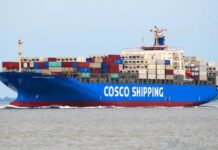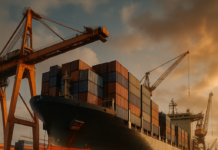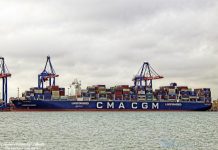
The significant disruptions in services due to the round-of-Africa routing naturally raise questions about the impact on deployed capacity.
Here comes Sea-Intelligence’s Trade Capacity Outlook database, which shows the differences in offered capacity between the immediate pre-crisis and the present situation.
The following figure illustrates, for each of the four major East/West trades out of Asia, the cumulative change in offered capacity over the fill period from mid-December to the present date.
“We have deliberately not included future capacity as this would overlap with Chinese New Year effects. The cumulative changes up to the present date would therefore more ‘cleanly’ represent the Red Sea impact,” said the Danish analysts.






